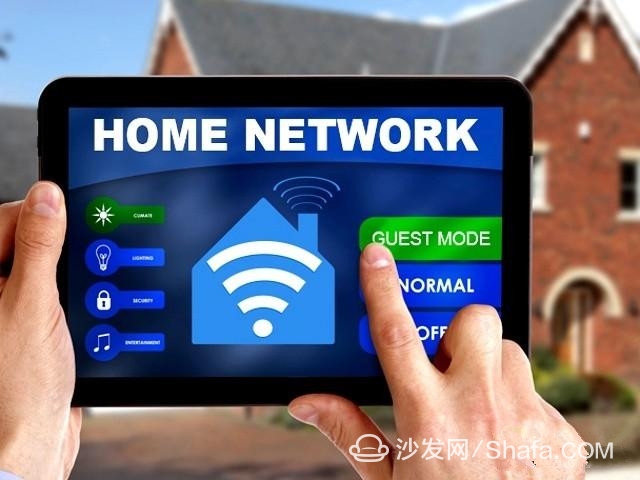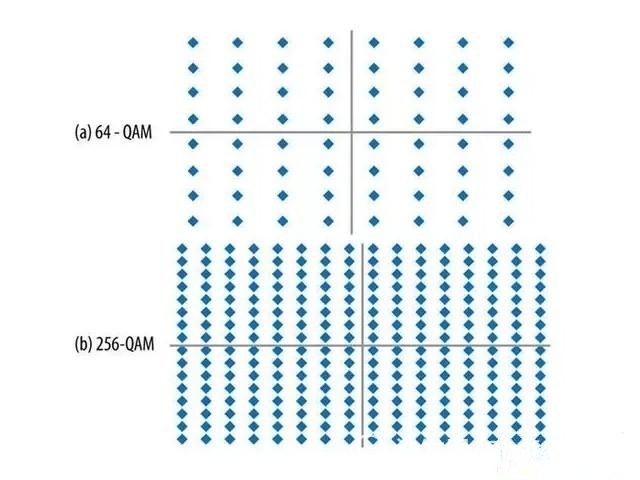Hello, everyone, the Wi-Fi common sense series has met with everyone. Wi-Fi has become a key tool for China Unicom's outside world. However, for the majority of users, in the home environment, what kind of wireless router to choose to better meet their own Wi-Fi application requirements? In the previous survey, it was found that many users are not very clear about this issue. Then, the author hopes to provide some help for these users on the router purchase through the following related introductions.

How to buy a wireless router
With the rapid development of Wi-Fi technology, more and more smart devices supporting interconnection and interoperability have emerged. Various networking devices represented by smart phones, tablet computers, and smart home products have also emerged rapidly. This is not just for Wi-Fi in the home. The network has brought a lot of challenges and put forward higher requirements for wireless routers that support the role of the "home network hub."

In order to enhance the home wireless network experience, you need to know when buying a wireless router?
Although there are many factors affecting Wi-Fi signals, in addition to obstacles, walls and other natural environmental factors will have a direct impact on its coverage, Wi-Fi transceivers such as wireless routers, terminals, and other Wi-Fi transceivers have their own product performance and quality. Problems are equally important.
Therefore, first of all, it is recommended that consumers purchase well-known brands of router products, so that in the product quality, quality and after-sales service, there will be a better guarantee.
Otherwise, even if some “high-power†routers that have not been certified by the national standard, or products produced by non-regular manufacturers, can have wall-pass Wi-Fi, excessive wireless power output will also produce health problems for consumers. With adverse effects, signal noise at the same time as power amplification will be amplified, and the signal quality may still not be guaranteed.
Second, the number of antennas is not the key to improving wireless coverage. Because, through actual tests, it is found that there are many router products with two antennas. Due to the addition of wireless power amplifier modules, signal coverage is often wider than some three-antenna routers. This is like judging whether the router signal can only rely on the built-in and external antennas.
Therefore, when selecting a router, it is not possible to simply measure the coverage of the antenna by the number of antennas.
Again, understand the details of the wireless router's parameters. For example, to master the internal parameters of the radio frequency chip brand, chip frequency, memory, cache, etc., from the side to examine how the router's performance and scalability, and whether the router uses a more advanced wireless signal search algorithm and other technologies, and even through Inquire product dismantling tests of professional evaluation agencies to learn more about product details.
11N or 11AC? In the end the election?
When it comes to Wi-Fi, everyone must have heard such terms as 802.11n and 802.11ac. They are all wireless transmission standard protocols approved by the IEEE (Institute of Electrical and Electronics Engineers). Just as our mobile phone network is upgraded from 3G to 4G, wireless standards are rapidly evolving. From 802.11a/b/g/n to 802.11ac, there is even 802.11ac Wave 1 (the first wave of 802.11 Ac) and the subdivision of 802.11ac Wave 2 (second wave 802.11ac).
When consumers purchase wireless routers, they will also see router products labeled "AC750," "AC1200," "AC1600," "AC1750," or "AC1900," and they are now available as "AC2350." New routers such as the AC3200 and AC5300 are constantly on the market. Although the above rate tag actually only adds the theoretical wireless rate of the dual-band or tri-band of the 11AC router, its theoretical rate of continuous refreshing is still really astounding.
Looking at the overall wireless market, according to the statistics released by the recent market-adjusting company NPD, wireless routers with AC1800+ specifications accounted for 45.9% of the total market, and sales increased by 35% compared with last year. The market for low-end and mid-range routers is facing a significant decline of more than 40%, while the high-end wireless router market continues to grow.
It should be said that in the face of the ever-increasing trend of Wi-Fi applications, especially the rapid popularization of streaming media such as online video and live applications, the traditional 802.11n router can no longer satisfy people's further pursuit of wireless network quality. 802.11ac has Gradually become the standard for today's home wireless networking.
So what are the advantages of 802.11ac compared to the 802.11n standard?
First, 802.11ac uses a higher-order modulation scheme, 256 QAM modulation, which provides more efficient data transmission and longer battery life than 802.11n's 64 QAM modulation. Because the higher the QAM modulation level, the greater the density of the transmitted data packets, the greater the amount of data that can be transmitted in the same unit of time. Although the use of high-order modulation schemes tends to produce a certain bit error rate, its fast transmission efficiency makes 802.11ac more dominant.

Second, 802.11ac introduces a bandwidth of 80/160 MHz, allowing its theoretical rate to increase again. In the case of single-link and one-stream transmission, the 80MHz bandwidth 802.11ac theoretical transmission rate can reach 433Mbps, which can achieve three times the theoretical rate of 40MHz 802.11n wireless, so at the 80/160MHz bandwidth, plus On the 256 QAM modulation mode, the transmission rate of 802.11ac has been significantly improved.
Also, it is the use of MU-MIMO (multi-user multiple input multiple output) architecture. Unlike traditional 802.11n MIMO, MU-MIMO allows wireless routers to communicate with multiple wireless terminals at the same time, significantly increasing network capacity and energy efficiency.

MU-MIMO architecture advantages
In the traditional MIMO mode, assuming that four single antenna devices (A, B, C, and D, respectively) are connected to the same wireless router at the same time, the wireless router needs to first communicate with A in a very short time, and then turn off. The communication with A starts communication with B again, and C and D queue up behind. However, using the MU-MIMO technology, the wireless router may not need to cut off the communication and communicate with the four devices at the same time. In theory, the use efficiency of the wireless network will be increased by 4 times.
Therefore, when selecting a wireless router, a wireless router using the 802.11ac standard should be your first choice.
Is there only a good router?
Although wireless routers are the key hardware for carrying Wi-Fi, you should not think that buying a single router will solve your home Wi-Fi network problem. In fact, the transmission of wireless signals is accomplished through two actions: "receiving" and "transmitting." Simply stacking performance on the router does not effectively improve the negative impact of low-end network card performance at the "transceiver" level.
Today, as wireless routers have entered the era of 802.11ac Wave 2 standard, theoretically the wireless standard is adopted and routers supporting 4x4 MU-MIMO architecture are combined, and advanced 1024-QAM modulation technology can be used to wirelessly operate in the 2.4 GHz frequency band. The speed is raised to 1000Mbps, and the highest wireless rate in the 5GHz band will also jump to 2167Mbps.

Even with a good router, if the wireless network card of the terminal device is a bottleneck, the transmission coverage effect will be greatly reduced.
However, if there is no corresponding adapter-supported wireless network card, even if the above-mentioned high-end router is purchased, it can not be substantially improved in signal transmission. Because, this is like two people playing badminton. One person gets a good tempo and sends out good balls to each other. If the other person can't reach it, it will not help.
Therefore, finding the matching wireless network card for high-end routers deployed with the 802.11ac Wave 2 wireless standard is the key to truly gaining high-quality Wi-Fi. However, in the current wireless network card market, relatively equivalent network card devices are rare and intangible have become the performance barriers of these high-end routers, which cannot fully demonstrate the strong potential of 802.11ac Wave 2 products in transmission. Therefore, in order to reap a better wireless signal experience, netizens must also upgrade their wireless routers to match their wireless network adapters.
to sum up:
Through the above introduction, after understanding the details of wireless router parameters and the differences in wireless standards, I believe that netizens should have a preliminary understanding of the choice of wireless routers. In general, for households below 2 bedrooms, the typical 100-yuan router is sufficient for everyday wireless applications. For three-bedroom or large-sized tenants, it is recommended to buy more than 300 yuan 802.11AC brand routers for networking. For a duplex type or villa occupant, you may consider arranging high-end routers and corresponding high-end wireless network cards worth more than 1,000 yuan to form a network. Of course, for such users, it may be more effective to consider selecting wireless repeater devices or power cat devices to expand network coverage.

With the rapid development of Wi-Fi technology, more and more smart devices supporting interconnection and interoperability have emerged. Various networking devices represented by smart phones, tablet computers, and smart home products have also emerged rapidly. This is not just for Wi-Fi in the home. The network has brought a lot of challenges and put forward higher requirements for wireless routers that support the role of the "home network hub."

Although there are many factors affecting Wi-Fi signals, in addition to obstacles, walls and other natural environmental factors will have a direct impact on its coverage, Wi-Fi transceivers such as wireless routers, terminals, and other Wi-Fi transceivers have their own product performance and quality. Problems are equally important.
Therefore, first of all, it is recommended that consumers purchase well-known brands of router products, so that in the product quality, quality and after-sales service, there will be a better guarantee.
Otherwise, even if some “high-power†routers that have not been certified by the national standard, or products produced by non-regular manufacturers, can have wall-pass Wi-Fi, excessive wireless power output will also produce health problems for consumers. With adverse effects, signal noise at the same time as power amplification will be amplified, and the signal quality may still not be guaranteed.
Second, the number of antennas is not the key to improving wireless coverage. Because, through actual tests, it is found that there are many router products with two antennas. Due to the addition of wireless power amplifier modules, signal coverage is often wider than some three-antenna routers. This is like judging whether the router signal can only rely on the built-in and external antennas.
Therefore, when selecting a router, it is not possible to simply measure the coverage of the antenna by the number of antennas.
Again, understand the details of the wireless router's parameters. For example, to master the internal parameters of the radio frequency chip brand, chip frequency, memory, cache, etc., from the side to examine how the router's performance and scalability, and whether the router uses a more advanced wireless signal search algorithm and other technologies, and even through Inquire product dismantling tests of professional evaluation agencies to learn more about product details.
11N or 11AC? In the end the election?
When it comes to Wi-Fi, everyone must have heard such terms as 802.11n and 802.11ac. They are all wireless transmission standard protocols approved by the IEEE (Institute of Electrical and Electronics Engineers). Just as our mobile phone network is upgraded from 3G to 4G, wireless standards are rapidly evolving. From 802.11a/b/g/n to 802.11ac, there is even 802.11ac Wave 1 (the first wave of 802.11 Ac) and the subdivision of 802.11ac Wave 2 (second wave 802.11ac).
When consumers purchase wireless routers, they will also see router products labeled "AC750," "AC1200," "AC1600," "AC1750," or "AC1900," and they are now available as "AC2350." New routers such as the AC3200 and AC5300 are constantly on the market. Although the above rate tag actually only adds the theoretical wireless rate of the dual-band or tri-band of the 11AC router, its theoretical rate of continuous refreshing is still really astounding.
Looking at the overall wireless market, according to the statistics released by the recent market-adjusting company NPD, wireless routers with AC1800+ specifications accounted for 45.9% of the total market, and sales increased by 35% compared with last year. The market for low-end and mid-range routers is facing a significant decline of more than 40%, while the high-end wireless router market continues to grow.
It should be said that in the face of the ever-increasing trend of Wi-Fi applications, especially the rapid popularization of streaming media such as online video and live applications, the traditional 802.11n router can no longer satisfy people's further pursuit of wireless network quality. 802.11ac has Gradually become the standard for today's home wireless networking.
So what are the advantages of 802.11ac compared to the 802.11n standard?
First, 802.11ac uses a higher-order modulation scheme, 256 QAM modulation, which provides more efficient data transmission and longer battery life than 802.11n's 64 QAM modulation. Because the higher the QAM modulation level, the greater the density of the transmitted data packets, the greater the amount of data that can be transmitted in the same unit of time. Although the use of high-order modulation schemes tends to produce a certain bit error rate, its fast transmission efficiency makes 802.11ac more dominant.

64 Comparison of QAM Modulation and 256 QAM Modulation
Second, 802.11ac introduces a bandwidth of 80/160 MHz, allowing its theoretical rate to increase again. In the case of single-link and one-stream transmission, the 80MHz bandwidth 802.11ac theoretical transmission rate can reach 433Mbps, which can achieve three times the theoretical rate of 40MHz 802.11n wireless, so at the 80/160MHz bandwidth, plus On the 256 QAM modulation mode, the transmission rate of 802.11ac has been significantly improved.
Also, it is the use of MU-MIMO (multi-user multiple input multiple output) architecture. Unlike traditional 802.11n MIMO, MU-MIMO allows wireless routers to communicate with multiple wireless terminals at the same time, significantly increasing network capacity and energy efficiency.

In the traditional MIMO mode, assuming that four single antenna devices (A, B, C, and D, respectively) are connected to the same wireless router at the same time, the wireless router needs to first communicate with A in a very short time, and then turn off. The communication with A starts communication with B again, and C and D queue up behind. However, using the MU-MIMO technology, the wireless router may not need to cut off the communication and communicate with the four devices at the same time. In theory, the use efficiency of the wireless network will be increased by 4 times.
Therefore, when selecting a wireless router, a wireless router using the 802.11ac standard should be your first choice.
Is there only a good router?
Although wireless routers are the key hardware for carrying Wi-Fi, you should not think that buying a single router will solve your home Wi-Fi network problem. In fact, the transmission of wireless signals is accomplished through two actions: "receiving" and "transmitting." Simply stacking performance on the router does not effectively improve the negative impact of low-end network card performance at the "transceiver" level.
Today, as wireless routers have entered the era of 802.11ac Wave 2 standard, theoretically the wireless standard is adopted and routers supporting 4x4 MU-MIMO architecture are combined, and advanced 1024-QAM modulation technology can be used to wirelessly operate in the 2.4 GHz frequency band. The speed is raised to 1000Mbps, and the highest wireless rate in the 5GHz band will also jump to 2167Mbps.

However, if there is no corresponding adapter-supported wireless network card, even if the above-mentioned high-end router is purchased, it can not be substantially improved in signal transmission. Because, this is like two people playing badminton. One person gets a good tempo and sends out good balls to each other. If the other person can't reach it, it will not help.
Therefore, finding the matching wireless network card for high-end routers deployed with the 802.11ac Wave 2 wireless standard is the key to truly gaining high-quality Wi-Fi. However, in the current wireless network card market, relatively equivalent network card devices are rare and intangible have become the performance barriers of these high-end routers, which cannot fully demonstrate the strong potential of 802.11ac Wave 2 products in transmission. Therefore, in order to reap a better wireless signal experience, netizens must also upgrade their wireless routers to match their wireless network adapters.
to sum up:
Through the above introduction, after understanding the details of wireless router parameters and the differences in wireless standards, I believe that netizens should have a preliminary understanding of the choice of wireless routers. In general, for households below 2 bedrooms, the typical 100-yuan router is sufficient for everyday wireless applications. For three-bedroom or large-sized tenants, it is recommended to buy more than 300 yuan 802.11AC brand routers for networking. For a duplex type or villa occupant, you may consider arranging high-end routers and corresponding high-end wireless network cards worth more than 1,000 yuan to form a network. Of course, for such users, it may be more effective to consider selecting wireless repeater devices or power cat devices to expand network coverage.
![<?echo $_SERVER['SERVER_NAME'];?>](/template/twentyseventeen/skin/images/header.jpg)